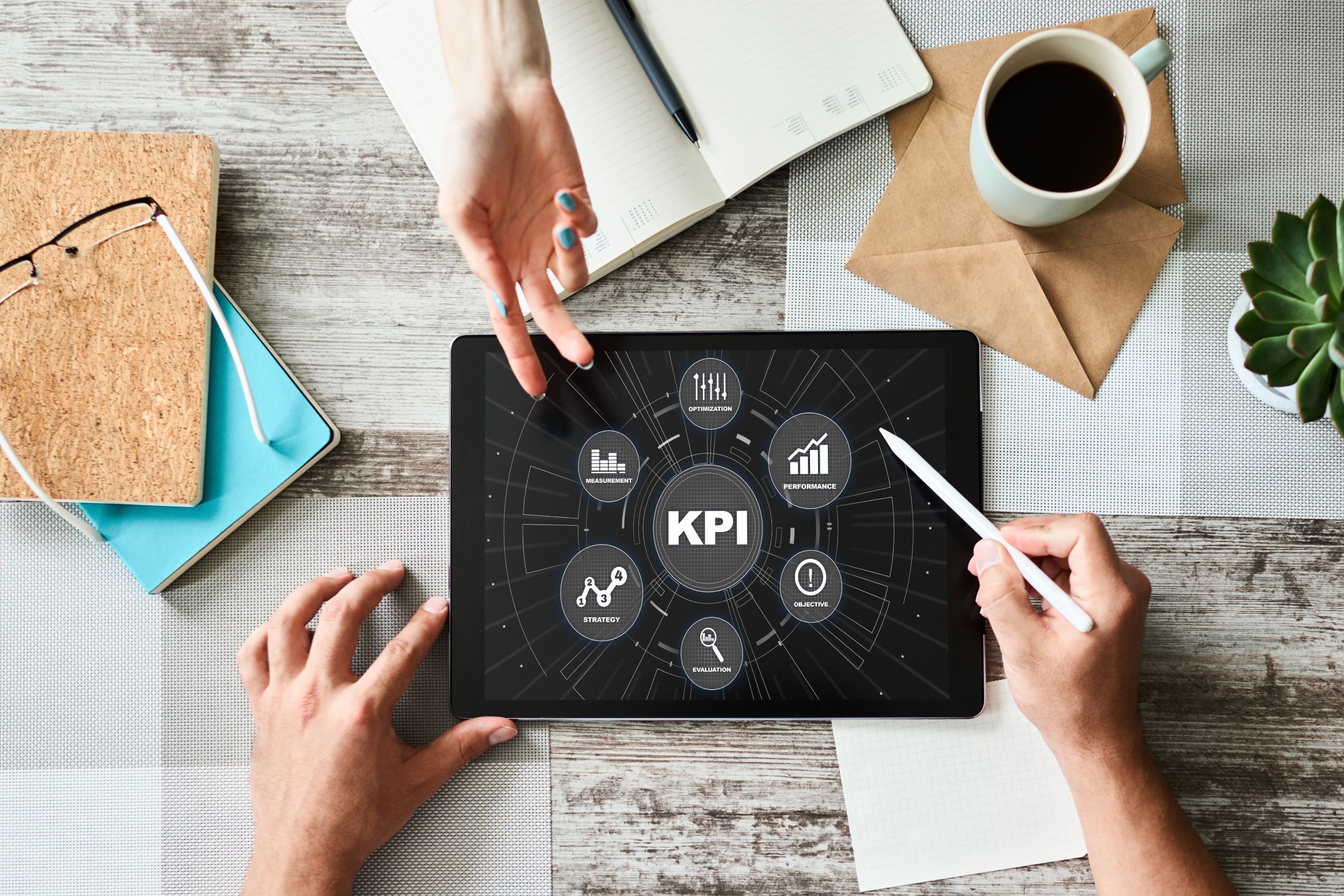If you’re like most business owners, you’re always looking for ways to improve your operations and achieve your goals. Monitoring your key performance indicators (KPIs) is a great way to do this. KPIs are metrics that measure how well your business is doing in specific areas. By tracking them regularly, you can identify trends and make necessary changes to keep your business on track. This guide will discuss what KPIs you should be monitoring and how to go about it. Let’s get started!
What are key performance indicators (KPIs)?
A Key performance indicator (KPI) is a quantifiable measure of performance for a specific objective over time. KPIs provide targets or benchmarks to measure performance and insights that help businesses make better decisions.
KPIs, key performance indicators define and measure progress toward organizational objectives. Organizations use KPIs to evaluate success at reaching targets. High-level KPIs may focus on the business’s overall performance, while low-level KPIs may focus on processes across departments like sales, marketing, HR, or support.
Why is tracking KPIs essential?
Tracking KPIs are a way of measuring the progress of a business towards specific organizational goals. There are different types of KPIs, depending on what stage of the company you are in and what you want to measure.
What are High-level KPIs?
High-level KPIs are metrics that measure the overall performance of a business. For example, they may focus on revenue, profitability, customer satisfaction, or market share. By tracking these KPIs regularly, business owners can identify trends and make necessary changes to keep their business on track.
What are low-level KPIs?
Low-level KPIs measure the performance of specific processes within a business. For instance, they may focus on sales, marketing, HR, or support. By tracking these KPIs regularly, business owners can identify trends and make necessary changes to improve the performance of those processes.
How do Key Performance Indicators differ by sector?
KPI Dashboards vary between different industries. However, the purpose remains the same. Low-level KPIs focus on processes, while high-level goals focus on business outputs that support profit or service delivery in the case of government. For example, the following summaries for manufacturing, service sector companies, the public sector, and the agricultural sector:
Key Performance Indicators (KPIs) used in manufacturing
A manufacturing KPI or metric is a well-defined measurement to monitor, analyze, and optimize production processes regarding their quantity, quality, and different cost aspects. They give manufacturers valuable business insights to meet their organizational goals.
Key Performance Indicators (KPIs) used in the service sector
In the service sector, indicators could include high marks on customer feedback surveys, increased repeat business figures, revenue generation, and customer referral numbers. KPIs are important tools for service companies to manage their growth, cash flow, customer retention, and customer satisfaction.
Key Performance indicators (KPIs) used in the Public Sector
Public sector key performance indicators are quantifiable measures that the public sector uses to evaluate performance. Government KPIs function similarly to KPIs used by for-profit businesses. They demonstrate the organization’s overall performance relative to the services provided.
Key Performance indicators (KPIs) used in Agricultural
KPIs for agriculture track feed usage, evaluate production and monitor costs. The most essential KPIs in the agriculture industry are productivity and profit. Moreover, farmers use KPIs to optimize agriculture processes and make informed business decisions. Hence, it is critical to monitor data in agriculture management if the business is to become more profitable and increase productivity.
How do businesses evaluate the value of KPIs?
Review business objectives.
Regularly reviewing your business goals makes it possible to build a resilient long-term strategy and develop an agile business that responds promptly to changes. KPIs are crucial to business objectives because they keep goals at the forefront of decision-making. Additionally, business objectives must be well-communicated across an organization. When people are responsible for their own KPIs, it ensures that their critical goals are prioritized correctly.
Analyze your current performance.
KPIs are more than numbers you report out weekly; they enable you to understand the performance and health of your business. KPI reports allow companies to make critical adjustments in planning and execution to achieve strategic goals. Knowing and measuring the correct KPIs will help you achieve results faster.
Set short and long-term KPI targets.
Key performance indicators are time-Bound. Having a set time frame for KPIs to be completed focuses the employees on achieving the goal. It also makes it easier to track the progress and outcomes of the set goals. These indicators provide a short-term analysis, referred to as “real-time” indicators.
Key performance indicators (KPIs) refer to a set of quantifiable measurements used to gauge a company’s overall performance over the short and long term. KPIs specifically help determine a company’s strategic, financial, and operational achievements, especially those of other businesses within the same sector.
Review targets with your team.
Checking in will allow you to know where to course correct, which initiatives are going faster than planned, and therefore help you re-allocate resources if need be. Tracking goals also helps teams stay motivated when they see progress and get close to completion.
Review progress and make adjustments
The purpose of a business review meeting is to Reinforce the accountability and action plans of each team or individual, share ideas and learn about interrelationships in the business. Celebrate success, identify and remove barriers.
What if KPIs aren’t meeting expectations?
Decision-makers must review KPIs monthly, quarterly, and annually. Reviewing KPIs from two perspectives; progress against the KPI and business progress versus strategic outcomes. Reviewing KPIs determines the effectiveness and value of the KPI. If the organization is not making any progress, KPIs are probably measuring the wrong process or outcome.
To have value, KPIs must provide benchmarks that can be clearly interpreted. When KPIs are not linked to strategy, their value is questionable. It is vital to collect information that will benefit the business. KPIs are only valid if they deliver mission-critical information relevant to the company.
Examples of high-level and low-level KPIs
Revenue growth.
Revenue growth measures the financial performance that your company has made in the past. Generally, companies want to make more and more money and profit with each passing month or year.
Revenue per client.
Revenue per client is a number that tells how much money a company makes from one customer. One way to find the revenue per client is to divide the total revenue by the number of customers.
Net Profit margin
One of the most important things a business looks at is how much money it makes. This number is called revenue growth. Another critical number is called revenue per client. This number tells how much money a company makes from one customer. The last significant number is called net profit margin. This number demonstrates how much money the company has left after paying its expenses.
Client retention rate.
The client retention rate measures how likely a customer will return to do business with your company. This can be measured by tracking the number of customers who return over a given time interval.
Customer satisfaction
Customer satisfaction is a measure of how happy your customers are with the products or services that you provide. This can be measured in several ways, such as surveys or feedback forms. An example of a KPI used to measure satisfaction is the Net Promoter Score (NPS).
Net Promoter Score
Net promoter score is a key performance indicator that asks customers: “How likely are you to recommend our company to a friend or colleague?” Group respondents into three categories: promoters, passives, and detractors.
Customer acquisition cost
Customer acquisition cost is a key performance indicator of how much money it costs to get a new customer. This can be measured by tracking the number of acquired customers over a given time interval.
Customer lifetime value
Customer lifetime value is a calculation of how much money a business can expect to earn from a customer over the course of their relationship with the company. This calculation takes into account the customer acquisition cost, as well as the net profit margin.
Organizational Performance Management
KPI report
A KPI report is a document that summarizes the key performance indicators of a business. Its purpose is to measure progress towards specific organizational goals—for example, financial performance goals and other performance KPIs.
Balanced Scorecard
A balanced scorecard is a performance management system that provides a holistic view of an organization’s performance. It measures organizational performance along four dimensions: financial, customer, internal business process, and learning and growth.
Performance data
There are different types of performance data, depending on what stage of the business you are in and what you want to measure. Examples include:
- Revenue growth.
- Revenue per client.
- Net profit margin.
- Client retention rate.
- Client satisfaction.
- Net promoter score.
- Customer acquisition.
Performance metrics
Performance metrics are quantifiable measurements of performance over time. Their purpose is to track progress towards specific benchmarks and support managers and employees in making better decisions.
What are Leading and Lagging Indicators?
Leading and lagging indicators are used to track business performance trends, past, and future. For example, the number of new customers acquired in a given time interval is a leading indicator of future revenue growth. Lagging indicators reflect past performance and are used to measure how well a company has.
What are Leading Indicators?
Leading indicators are performance indicators that measure progress in the present. Typically, these measures are used to track the success of a business before it puts into effect new strategies or changes. Examples of leading indicators include customer acquisition cost and customer retention rate.
What are lagging indicators?
Lagging indicators are measures that indicate the performance of a business over a period of time. Typically, these measures are used to track a company’s success after implementing new strategies or changes. Examples of lagging indicators include revenue growth, customer satisfaction, and net promoter score.
How do Key performance indicators support Strategic objectives?
The role of KPIs in the strategic planning process stems from the belief that KPIs provide a measurable and objective standard by which business leaders can measure performance and implement change. Businesses use KPIs in the strategic planning process to provide benchmarks by which they can measure progress.
Strategic KPIs are key performance indicators that are directly linked to the strategic objectives. They provide a measure of how well a company is performing against its strategic defined plans. Common examples of strategic KPIs include revenue growth, revenue per client, net profit margin, client retention rate, and customer satisfaction.
Key Performance Indicators Summarized
There are many strategic advantages of using KPIs. Having a set of measurements to gauge your company’s overall performance enables decision-makers to understand its performance versus competitors. In contrast, there are several disadvantages of not using KPIs. The most critical is that management can’t make informed decisions. Without KPIs to measure performance, the business is blind and can’t determine if strategic goals are being met. Additionally, employees will feel lost without a framework to guide their decision-making.
As you can see, key performance indicators are essential for understanding if your company is progressing towards its goals. Businesses can better allocate resources to improve overall outcomes by setting measurable targets and regularly assessing progress. If you’re looking for a more comprehensive way of tracking your business’ progress, our team at timewellscheduled.com would be happy to help. We utilize KPIs as an essential part of our decision-making process. We can assist you in setting up the right metrics for your organization.





